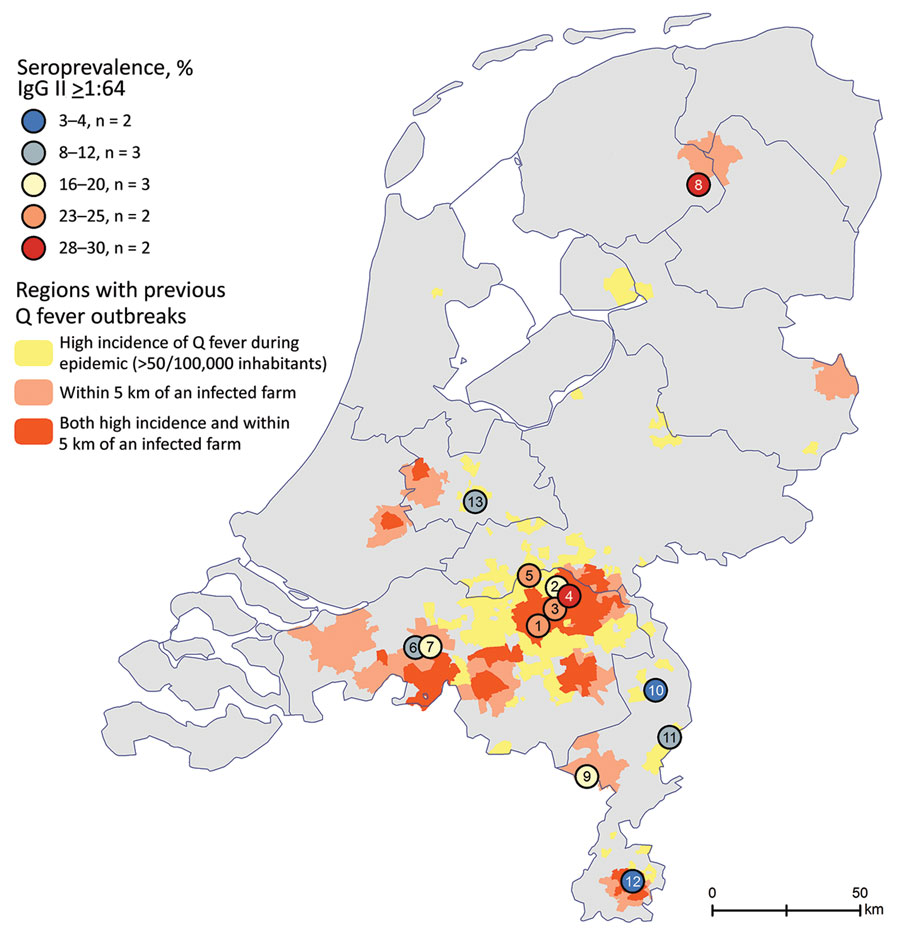Volume 28, Number 7—July 2022
Research
Targeted Screening for Chronic Q Fever, the Netherlands
Figure 1

Figure 1. Locations of participating general practices (numbers in circles) in the Netherlands and seroprevalence rates for chronic Q fever measured in study of targeted screening program to detect chronic Q fever. Colors indicate areas with high incidence of acute Q fever patients or areas near an infected farm that had abortion waves during the outbreak of 2007–2010.
Page created: May 06, 2022
Page updated: June 18, 2022
Page reviewed: June 18, 2022
The conclusions, findings, and opinions expressed by authors contributing to this journal do not necessarily reflect the official position of the U.S. Department of Health and Human Services, the Public Health Service, the Centers for Disease Control and Prevention, or the authors' affiliated institutions. Use of trade names is for identification only and does not imply endorsement by any of the groups named above.